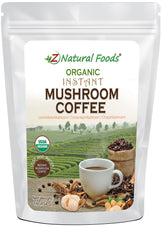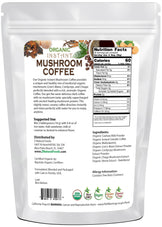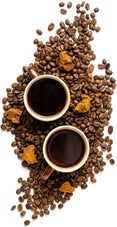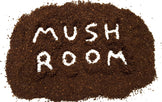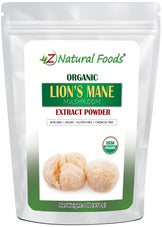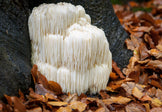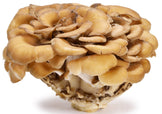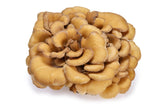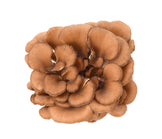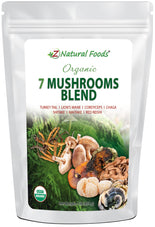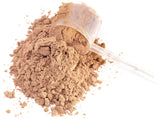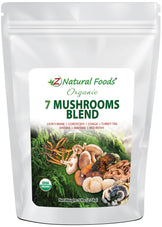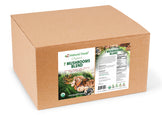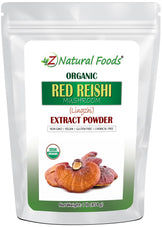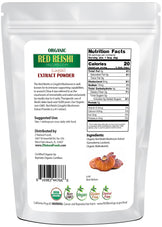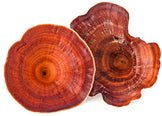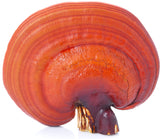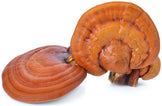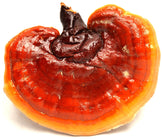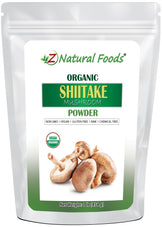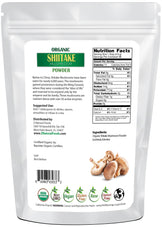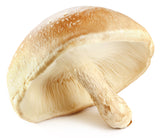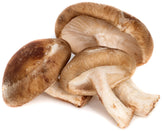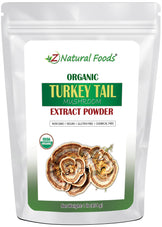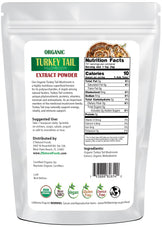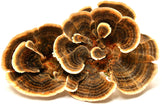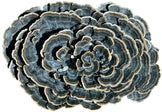Description
Description
If you have ever wondered what the difference is between lion’s mane mushroom and turkey tail mushroom, you have come to the right place.
In this article, we explain the difference between the two, and we review the latest research so you can make the best decision on what is right for you.
Is Lion’s Mane the same as Turkey tail?
No, while both contain a wide array of similar nourishing compounds, each has qualities and attributes that allow them to stand out individually. Each mushroom possesses unique compounds to nourish and support specific systems in a targeted manner.
While all mushrooms have certain nutritive qualities in common, they also have unique attributes, allowing them to potentially support and uniquely focus on individual systems.
Because of their well-known ability to support systemic modulation, medicinal mushrooms, known as double-direction equalizers, are some of the most revered foods in the herbal tonic world.
Let’s now dig deeper into this fun and important topic.
The difference between Lion's Mane and Turkey tail
Medicinal mushrooms contain a wide array of nourishing compounds that work synergistically to possibly support overall well-being.
Mushrooms' long and well-documented history of traditional usage has intrigued researchers worldwide to “crack the code” and learn about each mushroom's unique qualities and attributes.
Therefore, every day we are seeing more research and learning about their immunological, neurogenic, cardiovascular, and microbiome effects, along with a host of other nourishing qualities.
It is believed that the primary polysaccharides found in fungi are beta-D-glucans which come in various forms (beta 1-3 and 1-6) and are specific to fungi and yeast. Other polysaccharides found in mushrooms are Alpha-glucans like glycogen, dextran, pullulan, and starch, which are not thought to provide the same nourishing qualities as beta-glucans.
This belief tells you only part of the story and may be based on flawed science.
Therefore, It is misleading to state that beta-glucan levels are the determining factor in the effectiveness of a mushroom product. Beta-glucans are most effective when they work with all other constituents found in mushrooms, and if one or more are missing, it can change how effectively the end product works.
For more information, please refer to this article:
What types of polysaccharides are in mushrooms? (+Beta-glucan facts)
Our mission is to answer your questions and provide a thorough explanation and the critical details necessary to understand the topic. So, today we will answer the question…
Is Lion’s Mane mushroom the same as Turkey tail mushroom?
The simple answer to this question is no.
While both contain a wide array of similar nourishing compounds, Lion’s Mane, and Turkey tail have unique qualities and attributes that allow them to stand out as powerful individual entities.
Let’s now review each mushroom.
Lion’s Mane: The Nootropic of the Mushroom World
While other medicinal mushrooms affect the mind and spirit in unique and profound ways, Hericium Erinaceus, aka Lion’s Mane, is considered the true nootropic of the fungi world.
This robust traditional Chinese Medicine tonic is known and traditionally used in TCM to fortify the spleen and nourish the “five” internal organs (liver, lungs, spleen, heart, and kidneys); it also supports good digestion and general vigor.
While there are some very intriguing human studies, most studies on Lion’s mane are animal, in vitro, and in vivo models. These studies show great potential for the neuro-supportive effects of Lion’s Mane mushrooms, specifically, their impact on neuroplasticity and neurogenesis; more human studies are needed to solidify what we have learned.
Before we tell you all the exciting news about the Lion’s Mane mushroom, defining some commonly used terms associated with it is essential.
Lion’s Mane mushrooms contain many bioactive compounds, including
Nootropics Defined
Nootropics are a category of substances (both natural and synthetic) that show potential for improving cognitive function via relaxation, supporting a healthy mood, memory, attention, and creativity.
The Romanian psychologist Corneliu Giurgea first defined the term Nootropic and was also the first to synthesize one of the most well-known substances in this general category, Piracetam, in 1964.
The Giurgea Nootropic Criteria states that for any substance to be considered a nootropic, it must do the following six things:
- Enhance learning and memory.
- Enhance the resistance of learned behaviors/memories to conditions that tend to disrupt them.
- Protect the brain against a broad spectrum of physical or chemical injuries.
- Increase our ability to focus and pay attention
- Lack of common side effects that are related to other psychotropic drugs
- Be non-toxic at clinical dosages
Neurogenesis and Neuroplasticity Defined
Neurogenesis is the growth and development of nerve tissue. According to a review article in Frontiers, neurogenesis function, “The neural proliferate, migrate, and differentiate into mature neurons that eventually form the central nervous system.”
From what we know about this very complex process, neurogenesis may play a role in memory, learning systems, and protecting the brain from the pitfalls of chronic stress.
Neuroplasticity is “The ability of the nervous system to change its activity in response to intrinsic and extrinsic stimuli by reorganizing its structure, functions, or connections after injuries.”
Simply put, the brain can change and adapt due to experiences. For example, finding a new way to the store or remembering someone’s name.
According to a conference paper, Evidence for four forms of Neuroplasticity,
“We suggest that at least four major forms of functional neuroplasticity can be studied in normal human subjects and patients.
The four forms of functional neuroplasticity are
- Homologous area adaptation,
- Cross-modal reassignment,
- Map expansion, and
- Compensatory masquerade.
- Homologous area adaptation is the assumption of a particular cognitive process by a homologous region in the opposite hemisphere.
- Cross-modal reassignment occurs when structures previously devoted to processing a particular kind of sensory input now accept input from a new sensory modality.
- Map expansion is the enlargement of a functional brain region based on performance.
- Compensatory masquerade is a novel allocation of a particular cognitive process to perform a task.
By focusing on these four forms of functional neuroplasticity, several fundamental questions about how functional cooperation between brain regions is achieved can be addressed.”
So, how does Lion’s Mane play a role in these critical processes?
Here’s what the science is showing about Lion’s Mane:
- Preliminary research on Lion’s Mane suggests its potential to support the process of neurogenesis, possibly preventing and repairing nerve damage.
- Hericenones and Erinacines are shown to cross the blood-brain barrier, potentially stimulating nerve growth factor (A protein that plays a role in the maintenance, survival, and regeneration of neurons), which benefits those at high risk for brain injury.
- In a small double-blind, placebo-controlled human study understanding the effects Lion’s Mane mushrooms have on mild cognitive impairment, “ At weeks 8, 12 and 16 of the trial, the Yamabushitake group showed significantly increased scores on the cognitive function scale compared with the placebo group. The Yamabushitake group's scores increased with the duration of intake, but at week 4, after the termination of the 16 weeks of intake, the scores decreased significantly. Laboratory tests showed no adverse effect of Yamabushitake. The results obtained in this study suggest that Yamabushitake is effective in improving mild cognitive impairment.”
- In a randomized controlled trial looking at the effects Lion’s Mane has on depression and anxiety after four weeks, “Our results show that HE intake has the possibility to reduce depression and anxiety, and these results suggest a different mechanism from NGF-enhancing action of H. Erinaceus.” This study suggests that Lion’s Mane does not increase serotonin levels but stabilizes blood serotonin levels and dopamine. These findings may show significant benefits in depressed people.
- A double-blind, placebo-controlled study evaluated the improvement of cognitive function (using three tests) after taking lion’s mane for 12 weeks. It was reported that just from one of the tests alone, the lion’s mane significantly improved cognitive function and prevented deterioration.
- A study (30 females) looking at lion’s mane's potential effects on menopause, depression, and quality of sleep showed that the lion’s mane group (on both tests used in the study) showed significantly lower incidents of irritation and anxiousness compared to the placebo group. The results showed that lion’s mane has the potential to reduce depression and anxiety. The results also suggested a different mechanism of action than the well-documented NGF effects of lion’s mane.
Turkey Tail Mushrooms: The Great Immune Modulator
Coriolus Versicolor, commonly called Turkey tail mushroom, has a shape and multicolor appearance similar to a turkey's tail and is known in traditional herbal medicine as the cloud mushroom.
Sweet and bitter in flavor, neutral in temperature, Turkey tail is a revered tonic mushroom discussed in A Ming Dynasty edition of the materia medica.
known for supporting the three treasures by draining dampness, working as a powerful Qi and heart tonic, nourishing the spleen, reducing heat, and fortifying Wei Qi, aka the immune system.
Wei Qi is specifically associated with the lungs, and in Chinese medicine, if the energy in the lungs is well balanced, Wei Qi is strong.
Turkey's tail contains one of the highest amounts of beta-glucans for all mushrooms.
PSP and PSK: The power-packed Polysaccharopeptides
A Polysaccharopeptide is a bioactive polysaccharide agent bound to a protein found in turkey tail mushrooms that can work as an immunomodulatory agent. PSP and PSK are known as polysaccharide-protein complexes.
A Healthline research verified article titled 5 Immune-Boosting Benefits of Turkey tail Mushroom, made the following statements.
- “Turkey tail contains an impressive array of antioxidants, including phenols and flavonoids. One study detected over 35 different phenolic compounds in a sample of Turkey Tail mushroom extract along with the flavonoid antioxidants quercetin and baicalein.”
- “Krestin (PSK) and polysaccharide peptide (PSP) are two types of polysaccharopeptides found in turkey tail. Both PSK and PSP possess powerful immune-boosting properties. They promote immune response by both activating and inhibiting specific types of immune cells and by suppressing inflammation.”
- “A review of 13 studies found that patients given 1–3.6 grams of turkey tail mushroom per day along with conventional treatment had a significant survival advantage.”
- “Another review of 8 studies in over 8,000 people with stomach cancers demonstrated that those who were given chemotherapy along with PSK lived longer after surgery than individuals given chemotherapy without PSK.”
- “An 8-week study in 24 healthy people found that consuming 3,600 mg of PSP extracted from turkey tail mushrooms per day led to beneficial changes in gut bacteria and suppressed the growth of the possibly problematic E. coli and Shigella bacteria.”
Turkey Tail: A Potential Prebiotic
In a study discussing the effects of turkey tail mushroom and amoxicillin on the gut microbiome of healthy individuals, it was concluded that the ingestion of the polysaccharopeptide PSP led to consistent microbiome changes. Therefore, it showed that polysaccharides from Turkey tail mushrooms act as a prebiotic.
Turkey Tail and Lion’s Mane Mushrooms: A powerful adjuvant therapy
Adjuvant therapies are a type of therapy given along with a primary therapy. One thing that makes medicinal mushrooms so impressive is their ability to modulate and support adaptivity. An individual using a complementary approach to medicine often runs into the possibility of many complexities that occur during that therapy. Many unknowns are possible when combining a pharmaceutical(usually an isolated compound) and medicinal mushrooms (contains hundreds of compounds). Medicinal mushrooms have shown their ability to work well as an adjunctive therapy.
The University of Minnesota and Bastyr University (Kenmore, Washington) recently completed a phase 1 dose-escalation trial. “They found that up to 9 g/day of a T versicolor (Turkey tail)preparation is safe and tolerable in women with breast cancer who had undergone chemotherapy. Perhaps the most intriguing part of this study was the finding that 6 g of T versicolor appeared to lead to faster immune recovery after radiotherapy.”
Another study stated, “Immunological results indicated trends in (1) increased lymphocyte counts at 6 and 9 grams/day; (2) increased natural killer cell functional activity at 6 grams/day; (3) dose-related increases in CD8(+) T cells and CD19(+) B cells, but not CD4(+) T cells or CD16(+)56(+) NK cells.”
It is also believed that mushroom polysaccharides work by activating different immune responses in the host. The action of polysaccharides requires an intact T-cell component; their activity is mediated through a thymus-dependent immune mechanism.
The following was stated in a paper titled Neuroprotective Metabolites of Hericium Erinaceus Promote Neuro-Healthy Aging, “our present findings demonstrated the efficacy of a non-pharmacological approach based on the dietary supplementation using H. erinaceus extract, which represents a promising adjuvant therapy to be associated with conventional geriatric treatments.”
In conclusion, it is pretty clear that while Turkey tail and Lion’s Mane mushrooms contain some common qualities, they each possess unique compounds and attributes to nourish and support specific systems in a targeted manner.
Because of their nourishing qualities, fungi have been, and will continue to be, the focus of our research for many years to come.
These unique qualities, unlimited potential, and mysteries are what make the fungi world so intriguing.
For more information about our mushrooms, visit these great resources:
- Turkey Tail Mushrooms: A Review of the Latest Research
- What are the three main parts of a mushroom?
- What is Maitake Mushroom used for? (+5 traditional uses)
- Which Mushroom Is Good For The Brain? (Explained)
- Most nutritious mushrooms (list of 7)
To review all of our mushroom products, go here:



